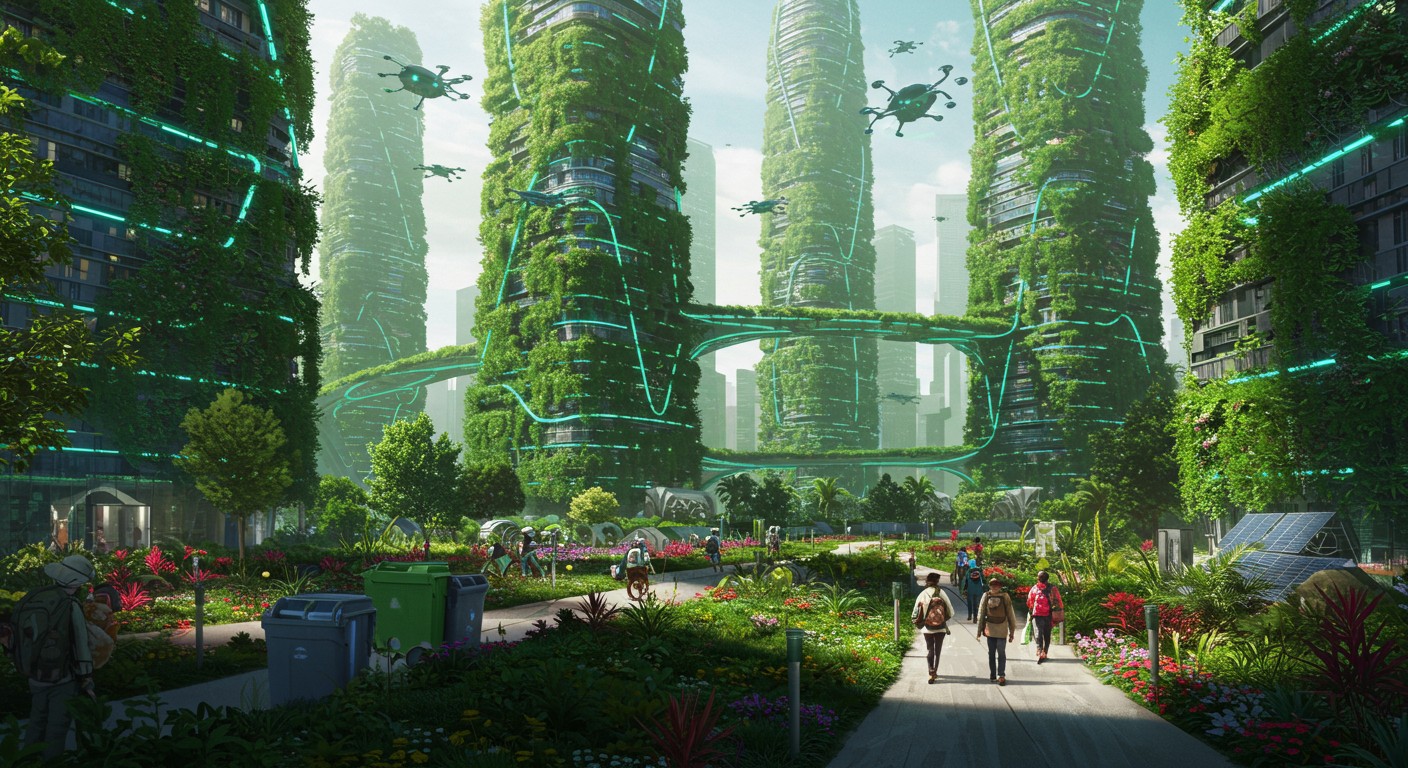
Illegal Dumping in Vierzon: A Call for Eco-Innovation
Imagine starting your day with a serene stroll along a riverbank, the air crisp and the scenery untouched—until you stumble upon nine bulging trash bags, their contents spilling out in a grotesque display of neglect. This isn’t a scene from a dystopian novel; it’s a real event that unfolded on March 17 in Vierzon, a quaint town nestled in central France. What one local discovered wasn’t just litter but a grim pile of goat feet, sheep skins, and entrails, carelessly tossed aside on a popular walking path. It’s a jarring reminder that even in 2025, our relationship with waste and nature remains strained.
The Vierzon Incident: A Wake-Up Call
The discovery wasn’t subtle. Along the Cher River’s edge, in the La Lœuf neighborhood, those nine 30-liter sacks stood out like a sore thumb against the natural backdrop. It took municipal workers until Thursday to clear the mess, revealing the unsettling contents: animal remains that should’ve been disposed of properly. For a community that cherishes its morning walks, this wasn’t just an eyesore—it was a betrayal of the environment they hold dear.
But this isn’t an isolated tale. It’s a symptom of a larger issue: how we handle waste, particularly organic refuse, in a world that’s running out of excuses for negligence. The incident sparks questions—why here, why now, and most importantly, what can we do differently?
Unpacking the Problem: Why Illegal Dumping Persists
Illegal dumping isn’t new, but its persistence is troubling. In rural areas like Vierzon, where resources might be stretched thin, proper waste disposal can feel like a hassle. Animal byproducts, especially, require specific handling—think slaughterhouses or farms with strict regulations. Yet, someone chose the easy way out, leaving nature to bear the burden.
Cost could be a factor. Disposing of organic waste legally often involves fees or transportation to designated facilities. For some, cutting corners trumps compliance. Others might lack awareness, assuming a few bags won’t hurt. But as this case shows, the impact is immediate and visceral.
“The earth doesn’t belong to us; we belong to the earth. Every piece of waste we discard is a choice we make for its future.”
An environmental thinker reflecting on humanity’s footprint.
The Environmental Ripple Effect
Those discarded remains didn’t just ruin a morning walk—they posed real risks. Decomposing animal matter attracts pests, from flies to rodents, which can spread disease. If runoff reaches the Cher River, water quality suffers, threatening aquatic life and anyone downstream relying on it. It’s a domino effect: one careless act, countless consequences.
Beyond biology, there’s the aesthetic toll. A path meant for relaxation becomes a dumping ground, eroding the community’s connection to its surroundings. In a town like Vierzon, where nature is a quiet treasure, that loss stings.
Key Impacts:
- Pest proliferation and potential health hazards
- Water contamination risks
- Loss of natural beauty and recreational space
Eco-Innovation: A Path Forward
Here’s where hope enters the picture. The Vierzon incident isn’t just a problem—it’s an opportunity to rethink how we manage waste. Eco-innovation offers solutions that blend technology, community effort, and sustainability to turn a mess into progress.
Take composting, for instance. Organic waste like animal remains can be transformed into nutrient-rich soil instead of clogging landfills or polluting trails. Small-scale biodigesters—compact systems that break down organic matter into biogas and fertilizer—are popping up in forward-thinking communities. Could Vierzon lead the charge?
Then there’s tech-driven accountability. Smart bins with sensors can alert authorities to overflow or misuse, while GPS tracking could deter illegal dumpers by making it easier to trace culprits. Pair that with local education campaigns, and you’ve got a recipe for change.
Community Power: Turning Outrage into Action
The walker who found those bags didn’t just shrug and move on—his report spurred action. That’s the spark communities need. Grassroots movements can pressure local governments to enforce stricter penalties or invest in green infrastructure. Picture this: neighbors banding together for clean-up drives, funded by crowdfunding, with local businesses pitching in eco-friendly tools.
It’s already happening elsewhere. In some regions, citizens use apps to report dumping sites, creating real-time maps for officials to tackle. Vierzon could adapt this, blending tech with human grit to reclaim its paths.
| Solution | Benefit |
|---|---|
| Community Composting | Reduces waste, enriches soil |
| Smart Bins | Prevents overflow, tracks usage |
| Citizen Reporting Apps | Speeds up response times |
The Bigger Picture: Waste as a Resource
Why stop at damage control? What if we saw waste not as trash but as untapped potential? Entrepreneurs are already turning animal byproducts into leather, pet food, or even biofuels. In Vierzon, a local startup could partner with farmers to collect and repurpose what’s now being dumped, creating jobs and cutting pollution in one swoop.
This shift demands bold thinking. It’s about redefining waste management as an industry of opportunity, not a chore. Governments could incentivize it with grants, while schools teach kids early about circular economies—where nothing’s wasted, everything’s reused.
Challenges to Overcome
Of course, it’s not all smooth sailing. Funding these innovations isn’t cheap, and rural areas often lag in infrastructure. Resistance to change is real—some might scoff at composting or smart bins as “too fancy” for a small town. Enforcement, too, remains tricky; without catching the culprits, deterrence weakens.
Yet, every challenge has a counterpoint. Crowdfunding and public-private partnerships can ease financial strain. Education can shift mindsets over time. And as for enforcement? A mix of tech and community vigilance might just tip the scales.
What Vierzon Teaches Us
This isn’t just about one town or one pile of trash. It’s a microcosm of a global struggle: balancing human habits with planetary health. Vierzon’s story could inspire other communities to act before their trails, rivers, or parks become the next dumping ground.
So, what’s the takeaway? It’s simple yet profound:
- Act locally: Small changes ripple outward.
- Embrace innovation: Tech and nature can coexist.
- Stay vigilant: Communities shape their own fate.
The sacks in Vierzon are gone, but the lesson lingers. Will we keep tossing our problems aside, or will we build a future where waste fuels progress? The choice, as always, is ours.









